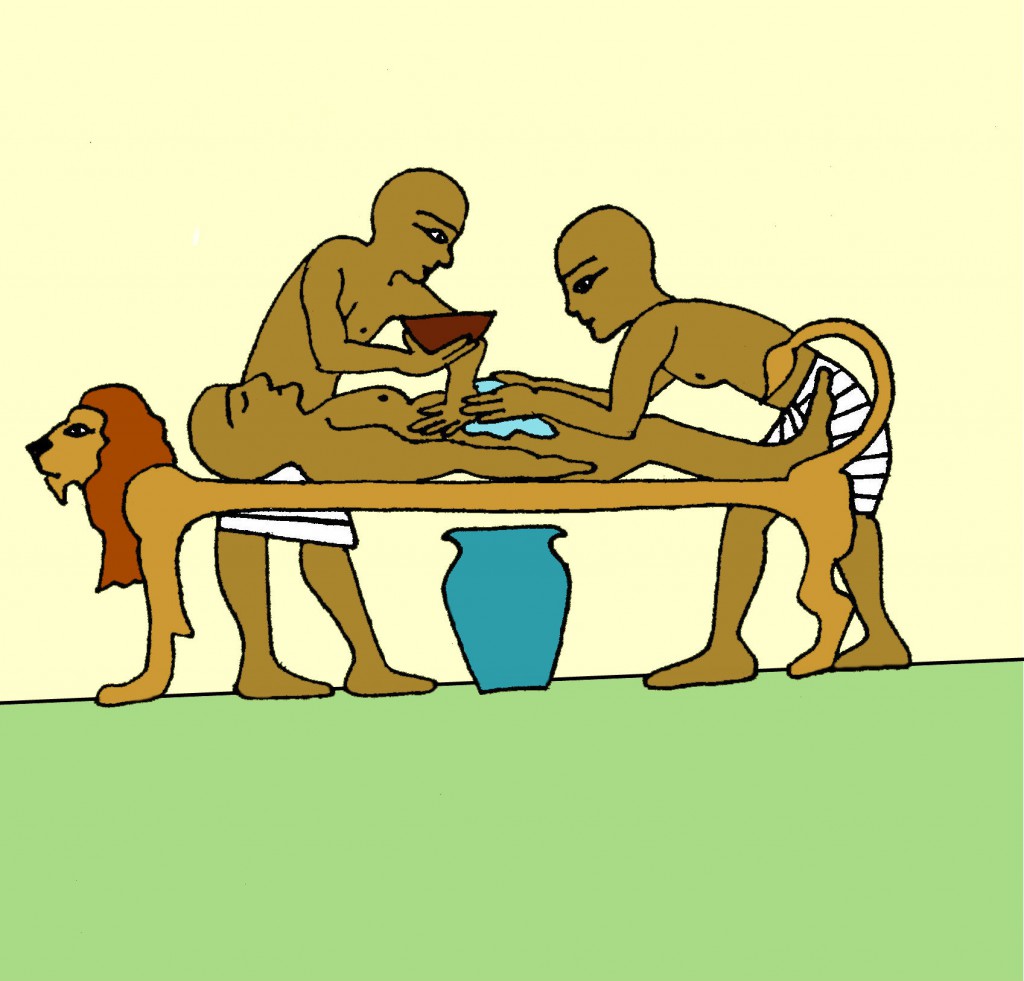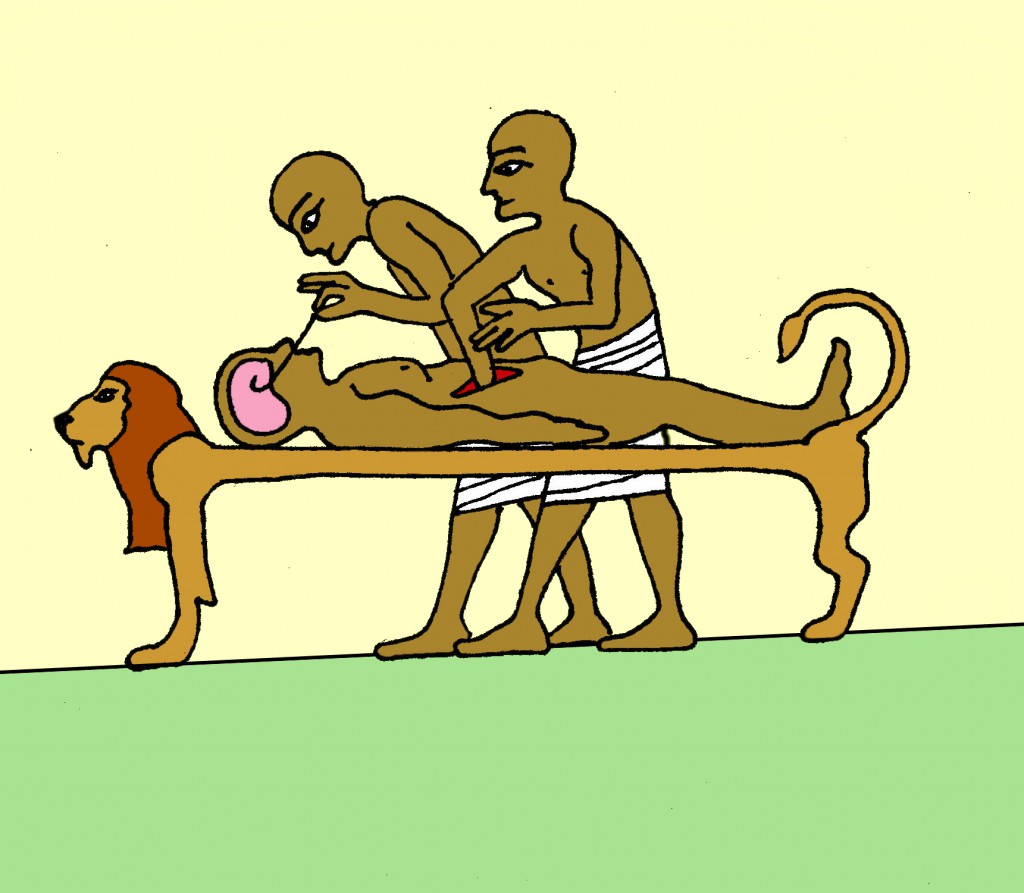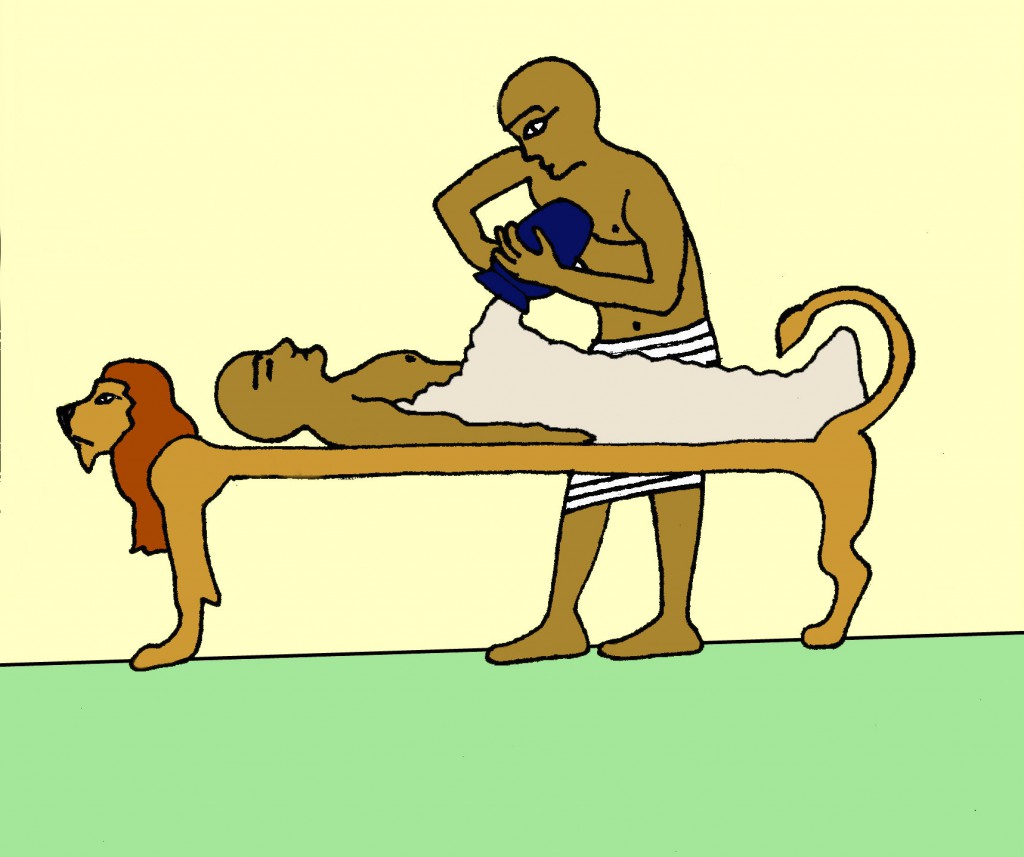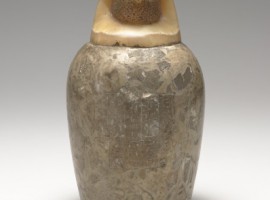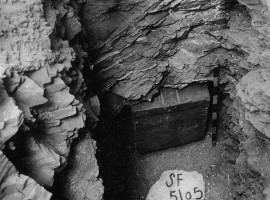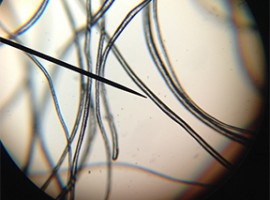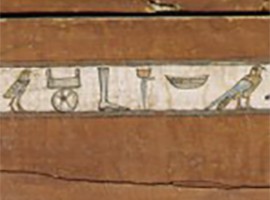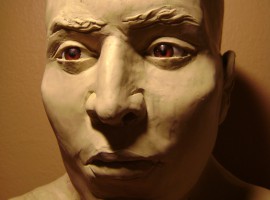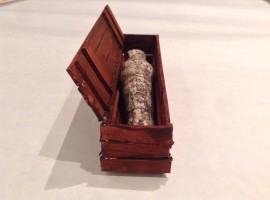Mummies and the Afterlife
Most of the evidence related to ancient Egyptian life comes from the funerary contexts and religious centers. Most of the surviving evidence for mummification and the treatment of the dead comes from the burials of the royalty and the aristocratic and economic elites; little has been discovered about the mortuary practices of common people. The goal of all burial preparation was to ensure quick, safe, and successful passage into the netherworld, where the individual’s life continued. The belief in the afterlife and its complicated route is apparent in predynastic burials. The most widely recognized development of mortuary practice was the process of mummification. Although mummification was a central practice in Egyptian culture, our most detailed descriptions of the process come from the Greek historians. This method was built upon the idea that bodies must remain intact for the deceased to live in the next life. Mummification evolved over time. At its origin in the Old Kingdom (ca. 2649 – 2150 BC), the practice was restricted to members of the royal family, but with the breakdown of central authority in the First Intermediate Period (2150-2030 BCE), the practice became more common. The most skilful mummies were created in the 21st Dynasty (1070 – 945 BCE).
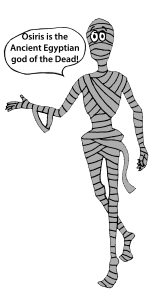
Image 1: Cleaning the body with oils and holy water.
Image 2: Removal of organs and brain from the body.
Image 3: Packing the body with Natron.
The Mummification Process
Tjeby was mummified at such an early period in Egyptian history, that little is known about how his body was prepared. Unlike in later periods, Tjeby’s arms and legs were wrapped individually and it appears that his brain may have been removed via the base of the skull.
The most sophisticated and best documented form of mummification was developed in later periods and began with the preparation and preservation of the corpse, and the actual wrapping and burial of the body came after. Before anything else, the body of the deceased was taken to the “place of purification” where embalmers (a hereditary class of professionals) would thoroughly clean the body with oils and sacred water. The next step was to remove the internal organs besides the heart (which, as the center of intelligence and feeling, was necessary in the afterlife) and kidneys. The removed organs were cleaned and separately preserved before they were either returned to the body cavity or placed (in later periods) in, special containers known as canopic jars. Canopic jars were constructed from different types of materials depending on the period as well as the status and wealth of the individual being buried. The bottom portion of the jars often have on a rounded shape, while the jar lids often were sculpted into figures, frequently one of the four sons of Horus, one of the principal gods of Egypt. Each son of Horus had a different form: Qebensenuf, depicted by a falcon; Duamutef, depicted by a jackal; Imsety, depicted by a human; and Hapi, depicted by a baboon. While canopic jars are something that most people associate with mummification they were not always used. For example, Tjeby was not found with canopic jars within his burial site. After the main organs were removed from the body, long hooks were used to pull the brain out of the body through the nose, and then the body was filled and covered with various spices, incense and natron, a mineral used for embalming. Natron dried out the flesh of the corpse, inhibiting bacterial growth and acting as a disinfectant. After the corpse had been dehydrated, the preserved organs could be placed back into the body cavity and additional materials (like resins, sawdust, and linen) could be added to create a more lifelike image. After being covered in aromatic oils, the body was officially ready to be wrapped in linen. The head and neck were the first body parts to be wrapped with strips of linen. Fingers and toes were wrapped individually. The wrapping of the arms and legs was next. Amulets (such as the “Eye of Horus,” a heart scarab, and the “Isis knot”) were often placed within the layers of wrapping to protect the body in its journey to the afterlife. Usually, a priest read evil-deterring spells while the body was being wrapped. After the initial wrapping was done, the arms and legs of the mummy were tied together. More linen strips were wrapped around the body, with liquid resin painted on at every layer to ensure that the bandages stuck together. Then, an even larger cloth was wrapped around the entire body and a picture of a god (usually Osiris) was painted on its surface. A board of painted wood went on top of the mummy before it was lowered into its coffin.
